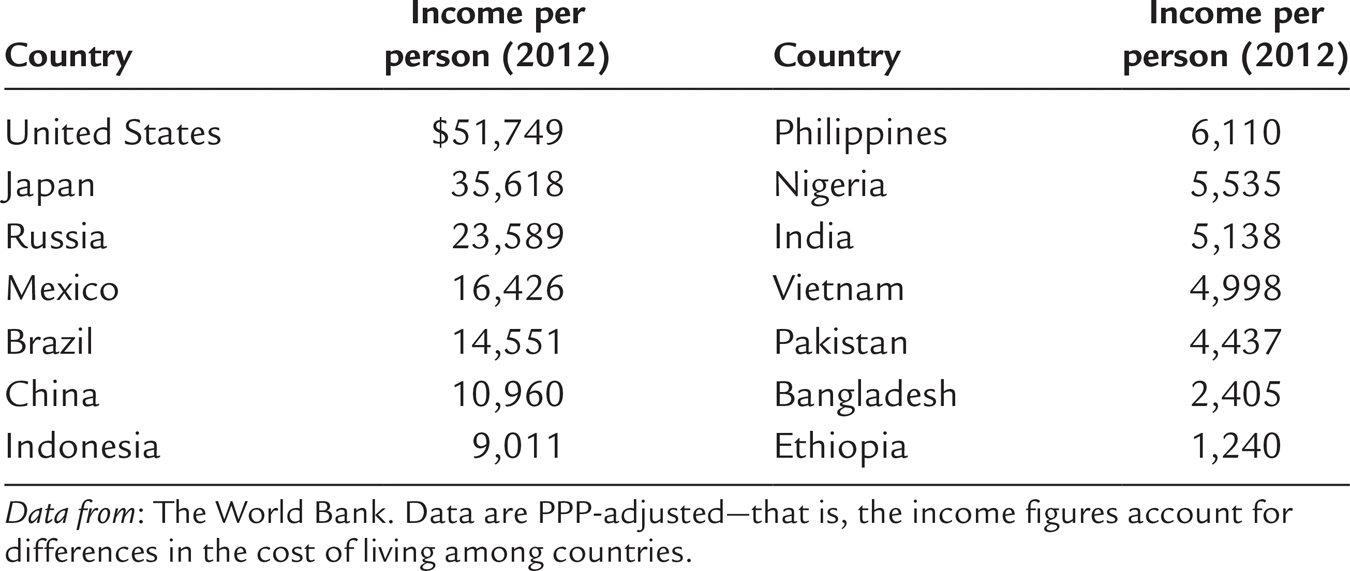Economic Growth I: Capital Accumulation and Population Growth
211
The question of growth is nothing new but a new disguise for an age-
—James Tobin
If you have ever spoken with your grandparents about what their lives were like when they were young, most likely you learned an important lesson about economic growth: material standards of living have improved substantially over time for most families in most countries. This advance comes from rising incomes, which have allowed people to consume greater quantities of goods and services.
To measure economic growth, economists use data on gross domestic product, which measures the total income of everyone in a nation’s economy. The real GDP of the United States today is more than seven times its 1950 level, and real GDP per person is more than three times its 1950 level. In any given year, we also observe large differences in the standard of living among countries. Table 8-1 shows the 2012 income per person in the world’s 14 most populous countries. The United States tops the list with an income of $51,749 per person. Ethiopia has an income per person of only $1,240—
TABLE 8-1
TABLE 8-

Our goal in this part of the book is to understand what causes these differences in income over time and across countries. In Chapter 3 we identified the factors of production—
Our primary task in this chapter and the next is to develop a theory of economic growth called the Solow growth model. Our analysis in Chapter 3 enabled us to describe how the economy produces and uses its output at one point in time. The analysis was static—
212